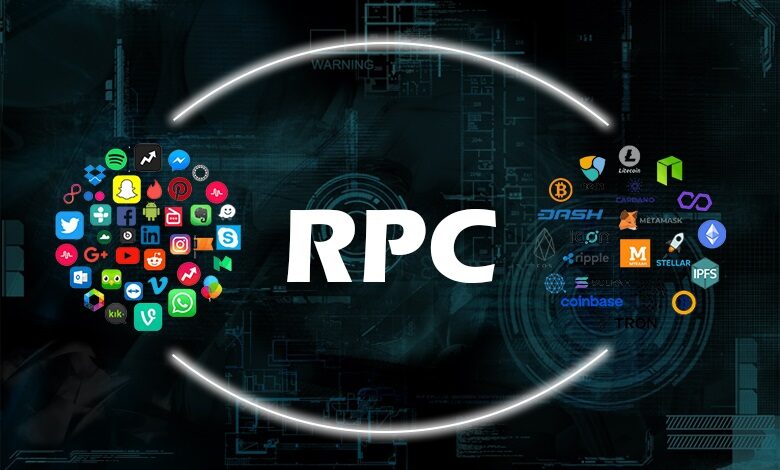Harnessing the Power of RPC for a Smooth Transition to Web3.0

Significant debate surrounds the current state of the internet, raising questions about whether we are witnessing the emergence of a new era known as Web 3.0. One crucial question is whether the internet as we know it will disappear or coexist with this new paradigm. It is important to approach the achievements of blockchain technology in revamping the internet with modesty, taking into account the widespread adoption, financial power, and regulatory acceptance of Web 2.0. Therefore, a potential approach could be to strive for a version of the internet that combines the best aspects of both Web 2.0 and Web 3.0, which we could refer to as Web 2.1.
Meanwhile, is there a middle ground? Can Remote Procedure Call (RPC) address some of the problems faced by Web 2.0 while leveraging the benefits of Web 3.0 infrastructure?
While RPC can provide certain benefits, it does not address all the challenges faced by Web 2.0 in transitioning to Web 3.0. RPC is just one component of the overall solution. A complete migration to Web 3.0 requires considerations beyond RPC, such as decentralized identity, governance models, scalability solutions, and improvements in user experience.
What is RPC?
Remote Procedure Call (RPC) is a software communication protocol that enables one program to request a service from another program located on a different computer within a network, all without the need to comprehend the intricacies of the network itself. RPC allows for the invocation of processes on remote systems in a manner similar to local system calls.
However, during the transition, RPC (Remote Procedure Call) plays a crucial role in moving Web 2.0 applications to Web 3.0 by enabling communication and interaction between these two paradigms. Here’s why RPC is important in this context:
Interoperability: RPC allows Web 2.0 applications to communicate with and leverage the functionalities of Web 3.0 protocols and decentralized networks. It enables seamless integration between the existing infrastructure of Web 2.0 applications and the decentralized technologies of Web 3.0. Through RPC, Web 2.0 applications can access and interact with smart contracts, decentralized storage, decentralized identity systems, and other Web 3.0 components.
Access to Blockchain Data: RPC provides a means for Web 2.0 applications to access and utilize blockchain data. By making RPC calls to blockchain networks, Web 2.0 applications can retrieve information such as transaction history, token balances, and smart contract states. This access to on-chain data enables the integration of blockchain functionality and transparency into existing Web 2.0 applications, enhancing their capabilities and value propositions.
Decentralized Functionality: RPC enables Web 2.0 applications to leverage the decentralized functionality offered by Web 3.0 protocols. By making RPC calls, Web 2.0 applications can invoke smart contract methods, execute decentralized computations, and utilize decentralized storage and messaging systems. This empowers Web 2.0 applications to adopt decentralized features and benefit from the trust, security, and censorship resistance provided by Web 3.0 technologies.
Smart Contract Integration: RPC facilitates the integration of smart contracts into Web 2.0 applications. Web 2.0 applications can utilize RPC to interact with smart contracts deployed on blockchain networks, enabling functionalities such as token transfers, decentralized finance (DeFi) interactions, and automation of business logic. This integration opens up new possibilities for Web 2.0 applications to incorporate programmable, autonomous, and transparent features provided by smart contracts.
Enhanced Security and Trust: Web 3.0 technologies bring enhanced security and trust through decentralized consensus mechanisms. By utilizing RPC to interact with Web 3.0 protocols, Web 2.0 applications can leverage these security features. They can validate transactions, verify data integrity, and ensure the immutability of critical information, providing users with increased trust and reducing reliance on centralized intermediaries.
Transition Pathway: RPC acts as a bridge that enables a gradual transition from Web 2.0 to Web 3.0. Instead of rebuilding applications from scratch, Web 2.0 applications can incorporate Web 3.0 functionality through RPC integration. This approach allows developers to iteratively introduce decentralized features while maintaining compatibility with existing user bases and infrastructure.
In summary, RPC plays a pivotal role in the migration of Web 2.0 applications to Web 3.0 by enabling interoperability, access to blockchain data, integration of decentralized functionality, smart contract interaction, enhanced security and trust, and providing a gradual transition pathway. RPC acts as a communication layer that facilitates the adoption of Web 3.0 technologies while preserving the existing benefits and user experiences of Web 2.0 applications.





